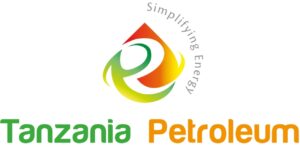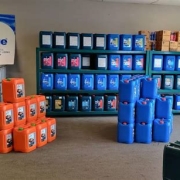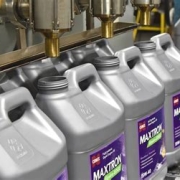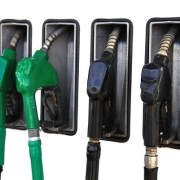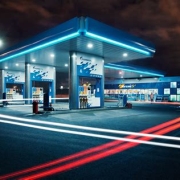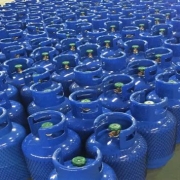Establishing a successful petrol station in Tanzania requires careful planning and adherence to local regulations.
The first step is to secure a suitable location, ensuring it is easily accessible to potential customers and meets all necessary zoning requirements. Once the site is identified, entrepreneurs must obtain the appropriate business licenses and permits from the local authorities.
This process may involve navigating Tanzania’s bureaucratic landscape, but diligence in fulfilling these legal obligations is crucial for the long-term viability of the venture.
Understand the Tanzanian Petrol Station Market
The Tanzanian petrol station market presents a promising opportunity for entrepreneurs looking to establish a successful business.
To gain a comprehensive understanding of this market, it is crucial to analyze the current demand and supply dynamics. Industry data reveals a growing need for fuel across the country, driven by an expanding transportation sector and rising vehicle ownership.
However, the market also exhibits a degree of saturation, with numerous players competing for a finite customer base.
By identifying the target demographics, such as urban commuters, long-haul truckers, and rural residents, entrepreneurs can tailor their offerings to meet the unique needs of these segments.
Additionally, staying abreast of market trends, including the emergence of alternative fuel sources and changing consumer preferences, will allow business owners to adapt and capitalize on evolving industry landscapes.
Obtaining the Required Licenses and Permits
Starting a petrol station business in Tanzania requires navigating a number of regulatory hurdles. First and foremost, you’ll need to register your business with the Tanzania Revenue Authority to ensure you’re operating within the country’s legal framework.
Additionally, you’ll need to acquire a petrol station license from the Energy and Water Utilities Regulatory Authority, which oversees the fuel retail sector.
Beyond these core requirements, you may also need to secure various local permits and approvals depending on the specific location of your station. This could include things like environmental impact assessments, and safety inspections. Carefully researching and obtaining all necessary licenses and permits is a critical first step towards establishing your petrol station and ensuring compliance with Tanzanian regulations.
Selecting a Strategic Location
When starting a petrol station business in Tanzania, it’s crucial to carefully select the site location. Begin by conducting a comprehensive site analysis to identify high-traffic areas that are likely to attract a steady stream of customers.
This could involve studying foot traffic patterns, nearby businesses and residential areas, and the volume of vehicle traffic on nearby roads.
Once you’ve identified potential locations, ensure that the site meets all necessary zoning and safety requirements set forth by local authorities.
Consider factors such as accessibility, with easy entry and exit points for vehicles, as well as proximity to major roads and highways. A strategic location that balances visibility, accessibility, and safety will be key to the long-term success of your petrol station venture.
Secure Financing and Funding
Securing the necessary financing and funding is a crucial step in starting a petrol station business in Tanzania. First, it’s important to carefully estimate the initial investment required, taking into account factors such as the cost of land, construction, equipment, and working capital.
Once you have a clear understanding of the financial needs, you can explore various financing options, such as bank loans or seeking investment from venture capitalists or angel investors.
Developing a comprehensive business plan that outlines your market analysis, operational strategy, and financial projections will be essential in securing the necessary funding to get your petrol station up and running.
Designing and Constructing the Petrol Station
With the site secured and the necessary permits in hand, the next critical step is designing and constructing the petrol station itself. This process begins by hiring a team of skilled architects and engineers who can devise the optimal station layout, ensuring efficient traffic flow, ample parking, and proper placement of fuel pumps, convenience stores, and other facilities. Compliance with local building codes and safety standards is paramount, as these regulations exist to protect both staff and customers.
Establish the Petrol Station Infrastructure
Constructing the petrol station facility is the first crucial step in establishing the business. This involves securing a suitable location, obtaining the necessary permits and approvals, and designing a layout that meets local regulations and industry standards.
Next, the installation of fuel storage tanks, fuel dispensers, and other essential equipment is crucial to ensure the safe and efficient delivery of petrol to customers. Lastly, implementing stringent safety protocols and environmental measures, such as spill containment systems and waste management procedures, is essential to comply with local laws and protect the surrounding community.
Establishing Fuel Supplier Relationships
Securing reliable fuel suppliers is a critical first step in launching a successful petrol station business in Tanzania.
Begin by thoroughly researching and identifying reputable fuel distributors operating in your local region.
Approach these suppliers with a collaborative mindset, seeking to negotiate favorable pricing and contract terms that will ensure a consistent, uninterrupted supply of petrol, diesel, and other petroleum products.
Building strong, long-term relationships with your fuel suppliers is essential for maintaining a steady flow of inventory, managing costs effectively, and providing your customers with the dependable service they expect from your petrol station.
Develop a Competitive Pricing Strategy
Crafting a competitive pricing strategy is crucial for the success of your petrol station business in Tanzania.
Begin by thoroughly researching the prevailing fuel prices in the local market, taking into account factors such as the current cost of crude oil, transportation, and regional supply and demand.
With a clear understanding of the market landscape, you can then determine your own cost structure and profit margins, striking a balance between offering customers attractive prices while maintaining a healthy bottom line.
By providing competitively priced fuel, you’ll be able to attract a steady stream of customers and establish your petrol station as a reliable and cost-effective option in the Tanzanian market.
Hire and Train Competent Staff
Building a strong, capable team is essential to the success of your petrol station business. Begin by recruiting qualified personnel to fill various roles, from customer service representatives to mechanics and managers.
Provide comprehensive training programs that cover customer service etiquette, safety protocols, and operational procedures. Establish effective management and supervision practices to ensure your staff consistently delivers high-quality service and upholds your business standards. Investing in your team’s development will pay dividends in the form of satisfied customers, efficient operations, and a thriving petrol station enterprise.
Ensuring Operational Efficiency
Maintaining the operational efficiency of a petrol station is crucial for its long-term success. This begins with implementing a robust inventory management system and a reliable fuel procurement strategy.
By carefully monitoring stock levels and optimizing the ordering process, you can ensure that your station always has the necessary fuel supplies on hand to meet customer demand.
Additionally, regularly maintaining the station’s equipment and facilities, such as the fuel pumps, underground storage tanks, and overall infrastructure, will help minimize downtime and improve the overall customer experience. Finally, continuously monitoring the business’s performance metrics, such as sales, profit margins, and customer satisfaction, will allow you to identify areas for improvement and make data-driven decisions to optimize the station’s operations.
